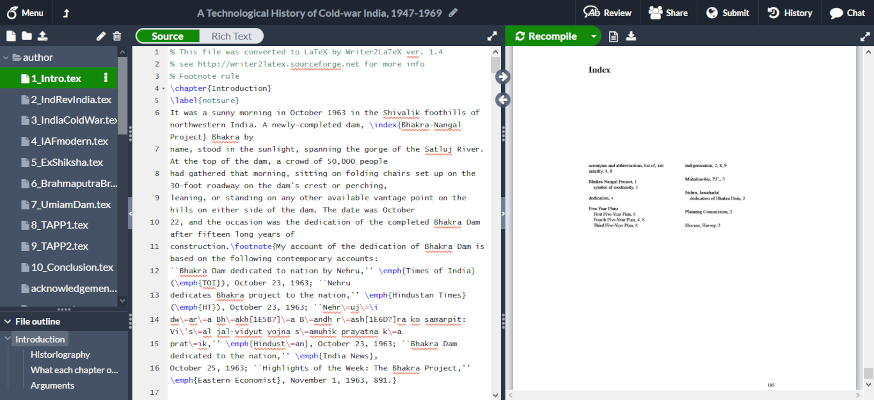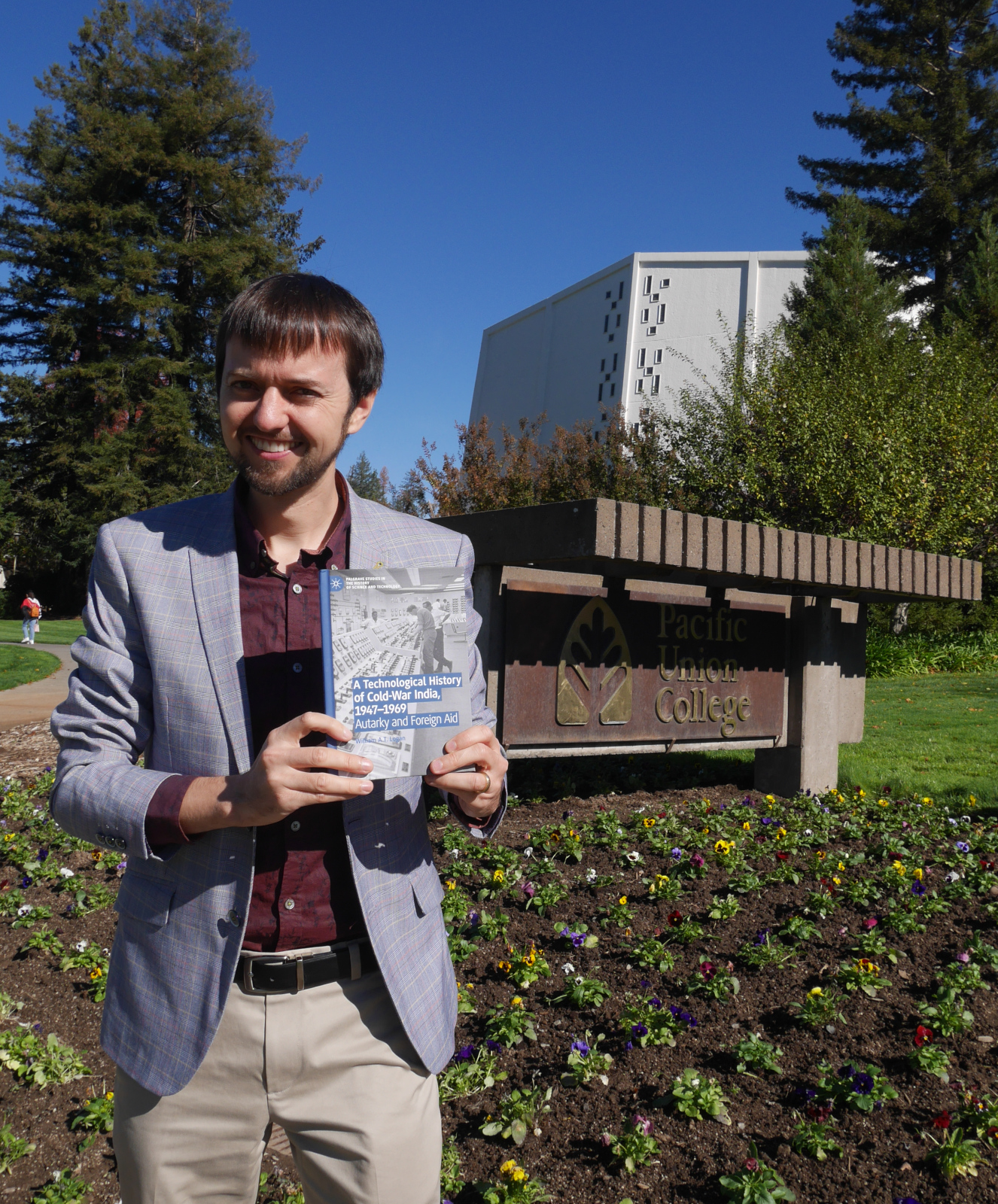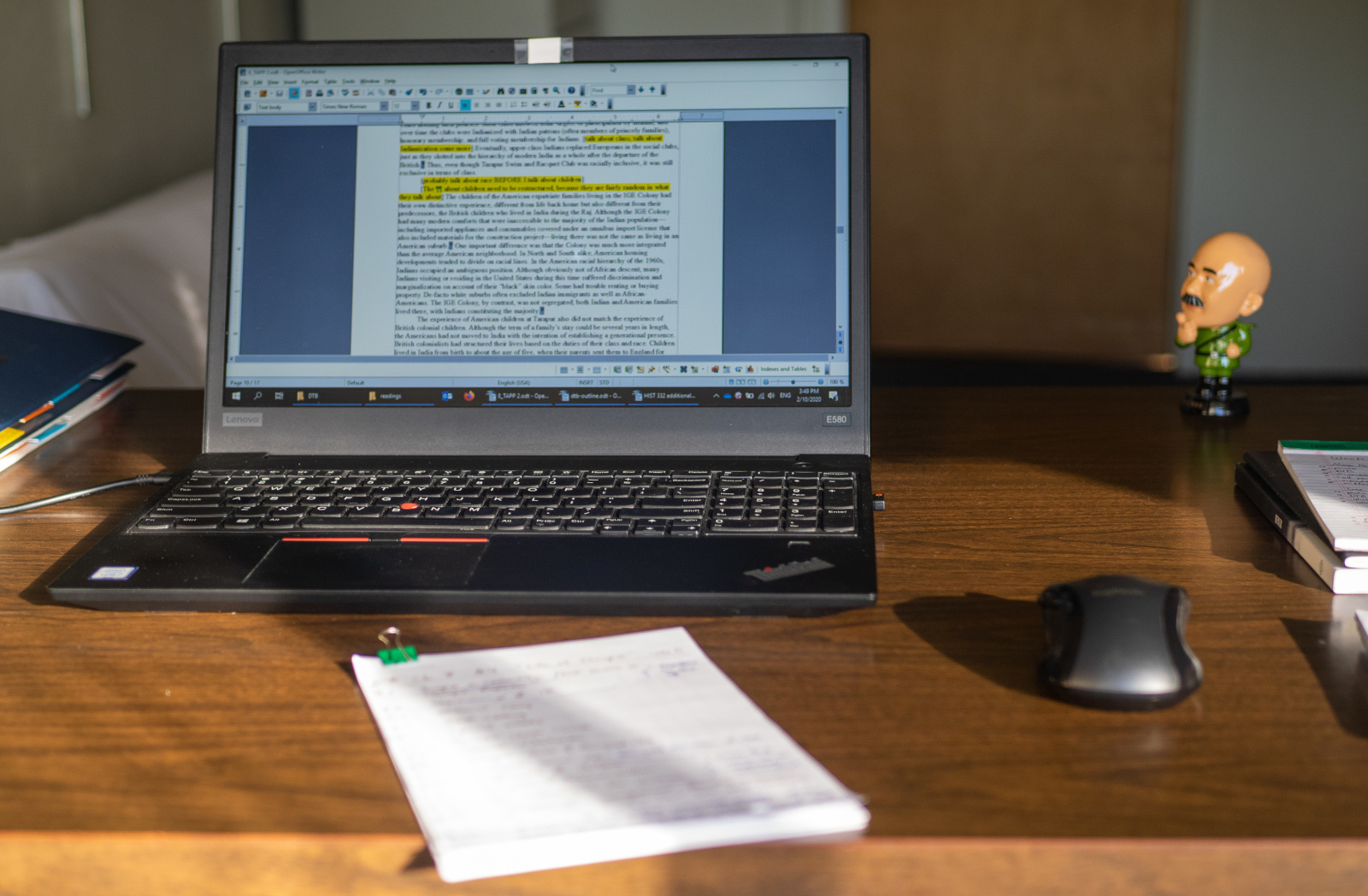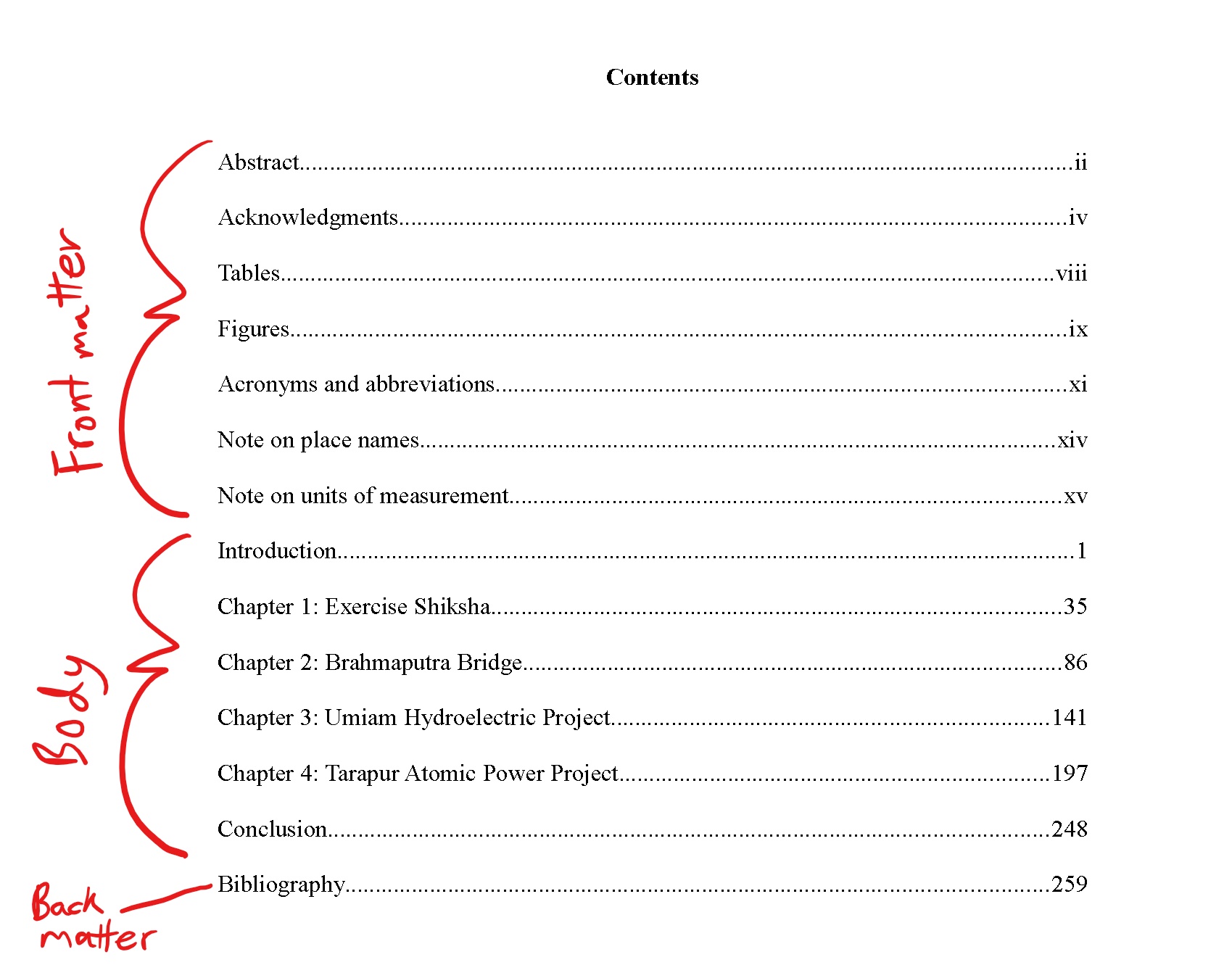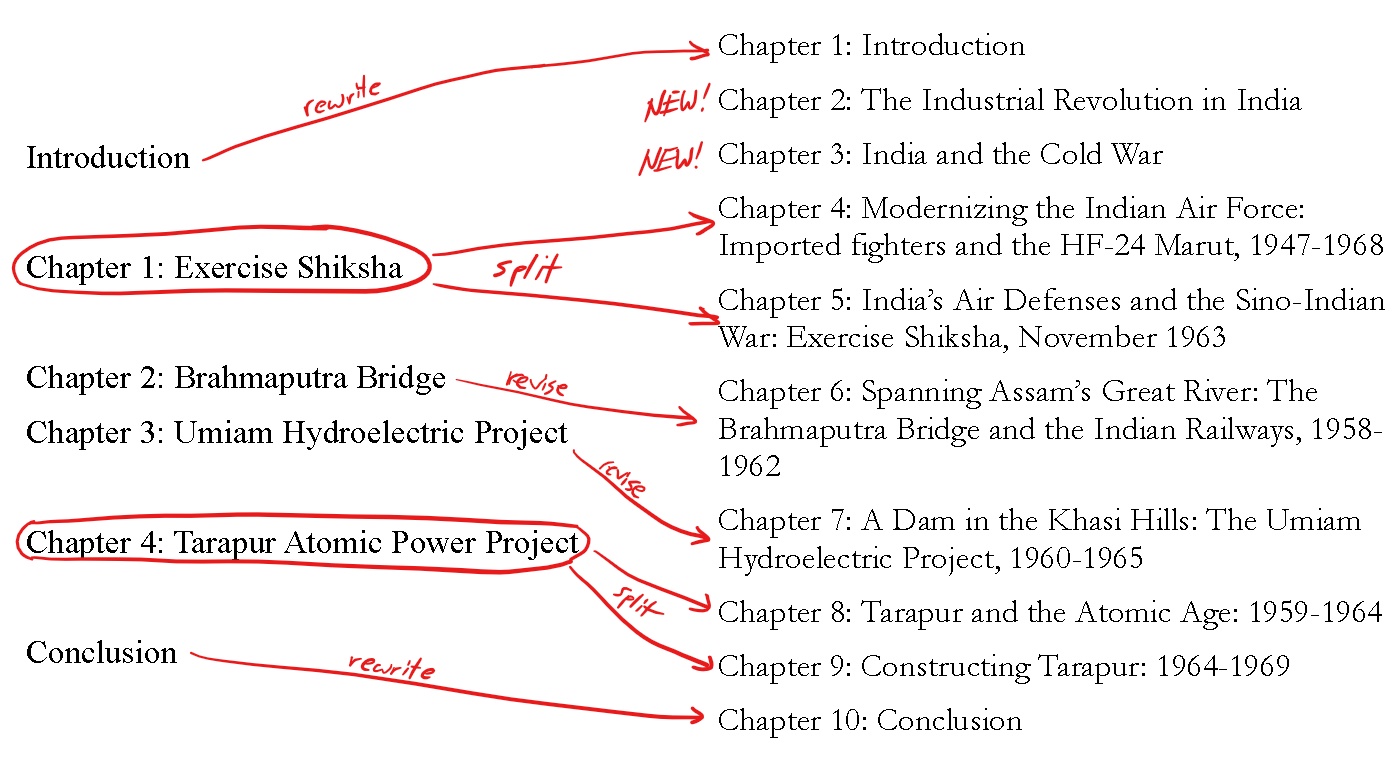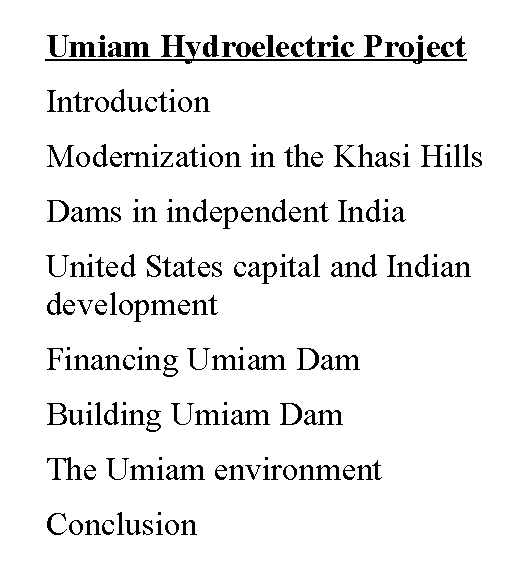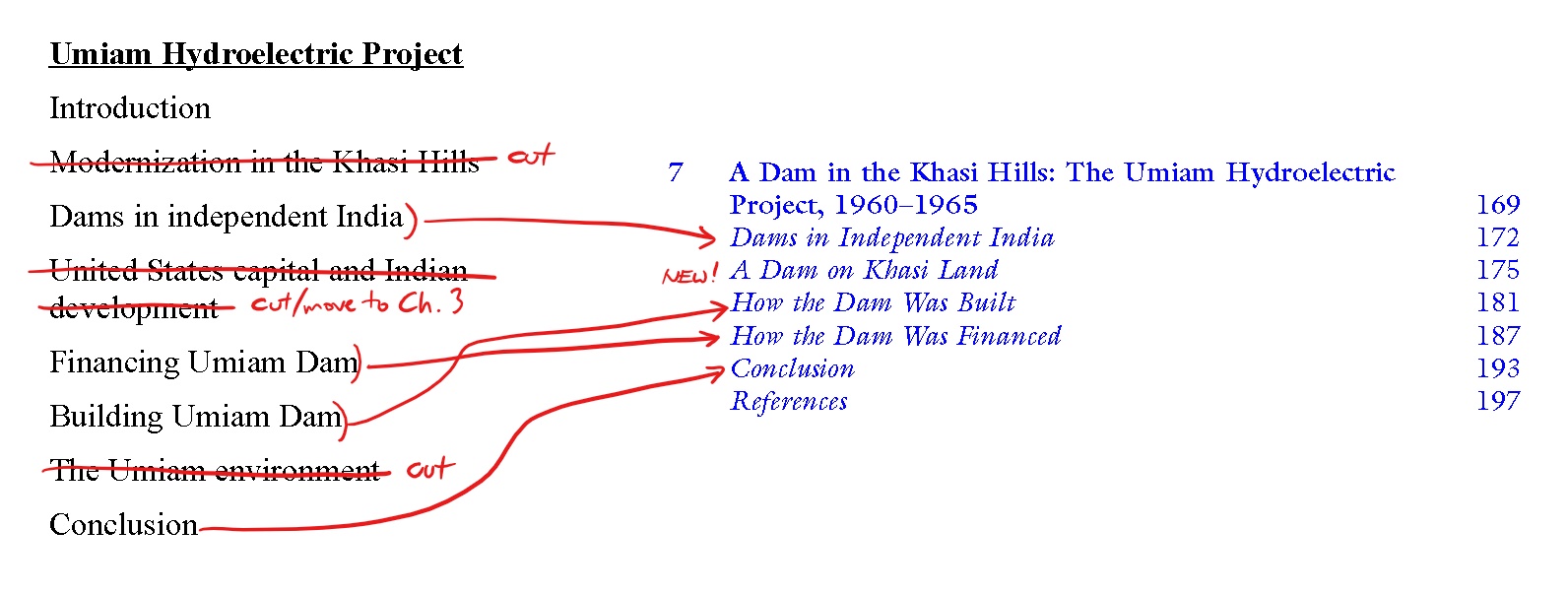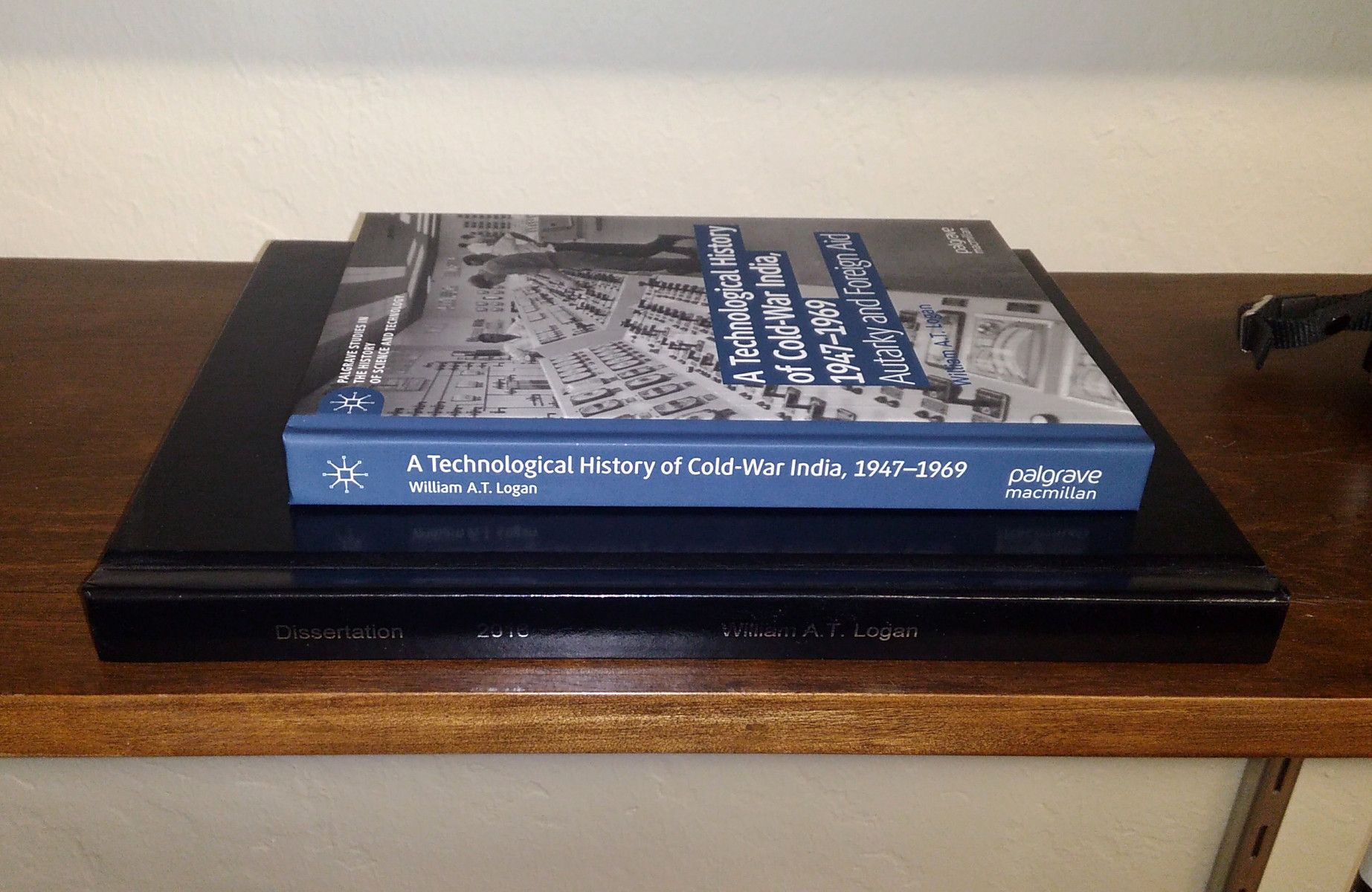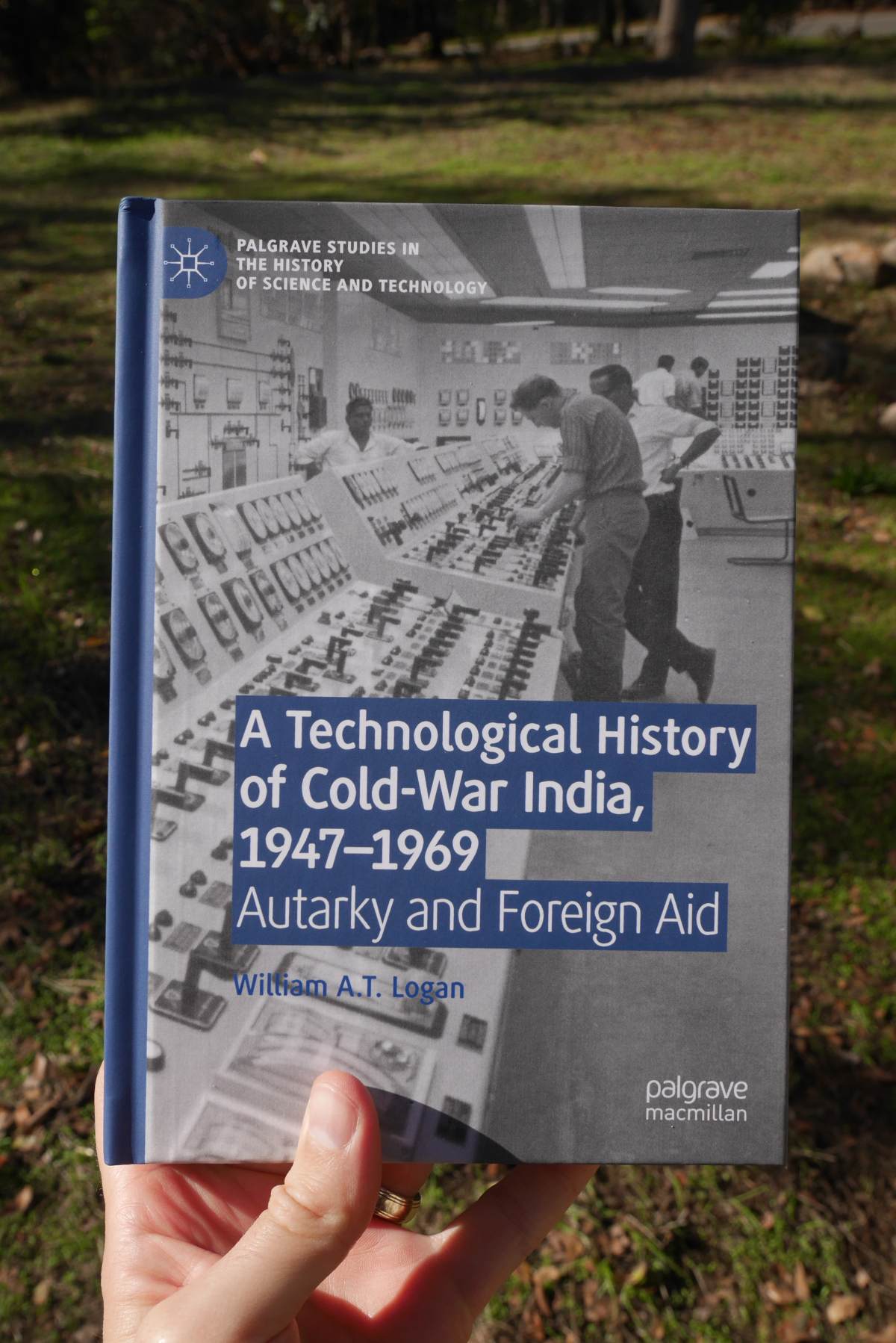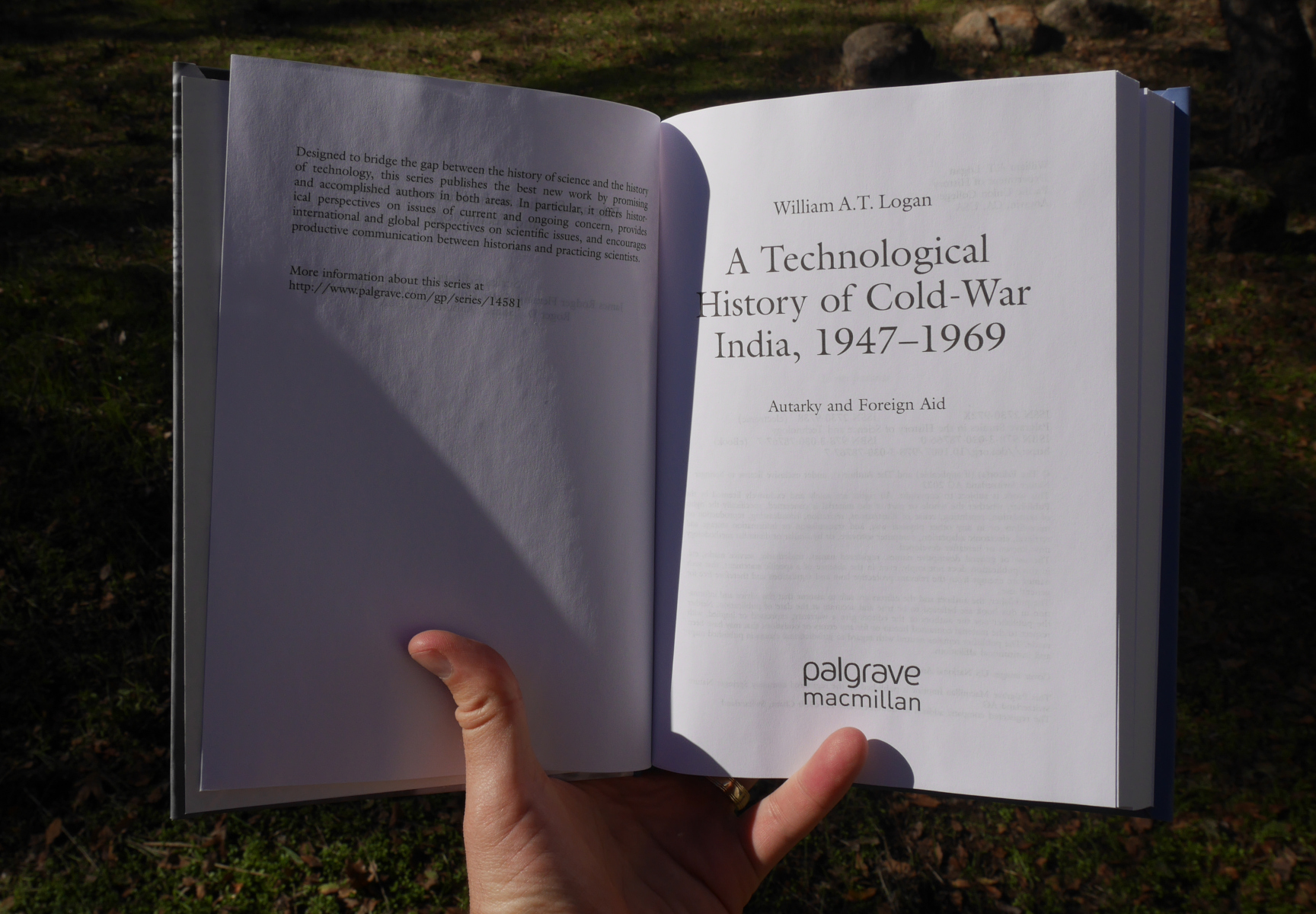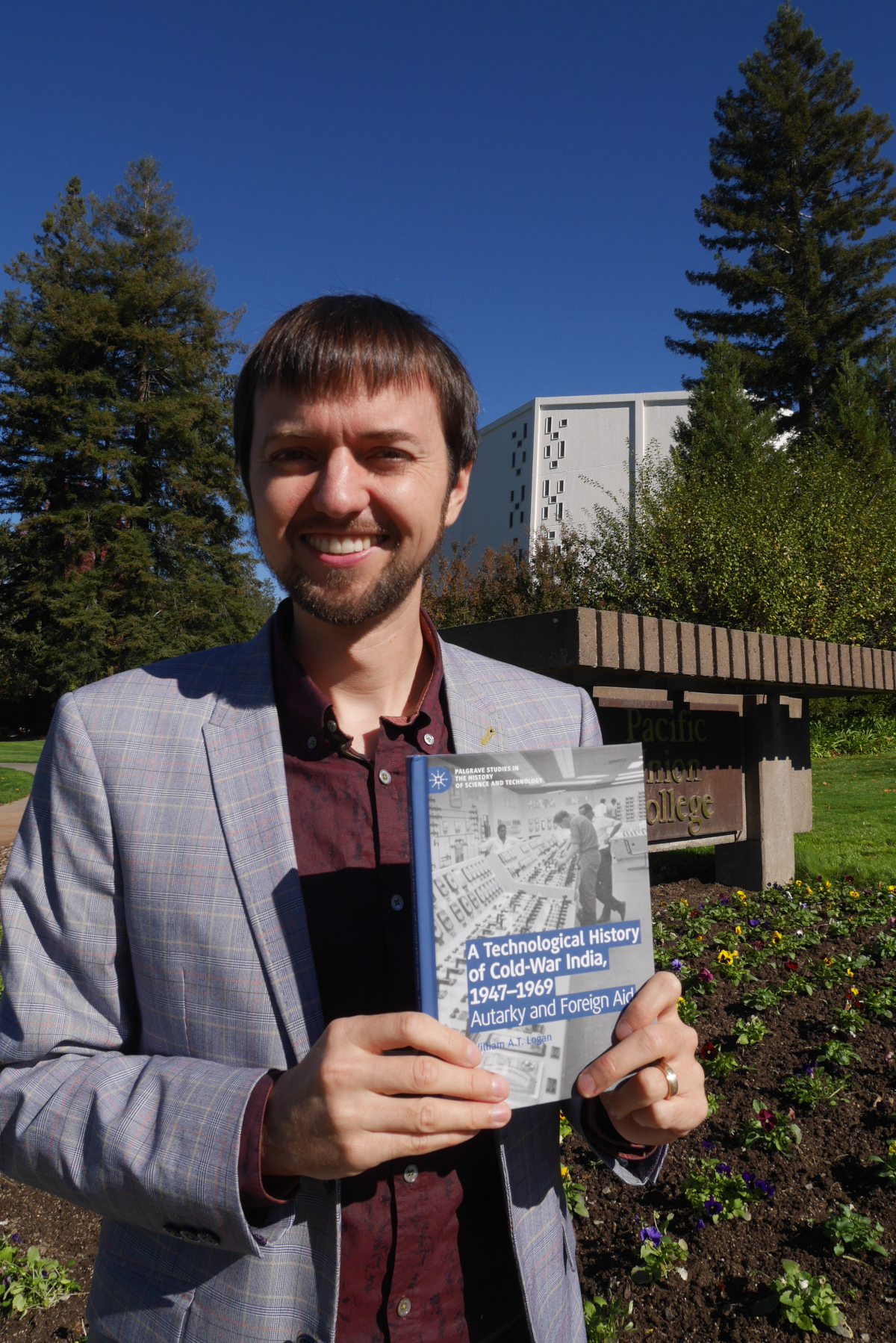After finishing the manuscript for my book, A Technological History of Cold-War India, it took more than a year to get from full draft to published book that I could hold in my hands. Going into this process, I didn’t know quite what to expect. While I had written long manuscripts before this one, I had never formally published anything longer than a magazine article.
I should start by pointing out that A Technological History of Cold-War India is an academic book, and academic books differ in several key ways from popular history books intended for the general market. Academic books are written and read by academics, and they are supposed to be well-researched and intellectually rigorous. Most importantly of all, they have to pass peer-review. Popular history books, on the other hand, have to be marketable. They need to sell enough copies to recoup their production costs and, ideally, make a tidy profit for the publisher. For academic books, the author’s educational qualifications are everything; for popular history books, what matters most is whether the author can write in an engaging way that will appeal to a broad audience.
Since academic books differ from popular history books, the publishing process is different as well. As I understand it, most popular publishers require authors to get a literary agent before submitting a proposal. For academic books, there isn’t much of a need for an agent, as getting a PhD is enough of a gatekeeper for authors. Instead of finding an agent, academic authors can skip straight to the next step, submitting a proposal.
The proposal
A book proposal is like a first date: a publisher meets your book project and has to decide if it will be worthwhile to explore this relationship further.
Authors typically write and send out multiple proposals for a book, but I sent out only one, to Palgrave Macmillan, the publisher that ultimately picked up my book. The reason why I chose that publisher was because it has a series about history of technology (Palgrave Studies in the History of Science and Technology), and I met one of the editors of that series at a conference (Roger Launius), and he encouraged me to send them a proposal.
It is not unusual for authors to send out proposals before they even finish the first draft of a book, and I did start writing a proposal for Palgrave years before I finished the draft. But the project bogged down so much that I had no idea when I would get a draft done. Ultimately, I didn’t submit a proposal until I had the first draft complete.
Although I was beset by self-doubt as I wrote the proposal, it was actually a fairly straightforward thing to write. I simply followed a template that Palgrave had on their website. The proposal asked for things like an overview of the project, chapter outline, description of market and competition for the book, and a list of questions like expected length of project, keywords, and funding information. All told, my proposal was nine pages in length, including chapter outline.
I sent the proposal off with the first three chapters of my manuscript and my CV in August 2020, a little over a month after I finished the first draft. Then I waited.
The contract
I heard back on my proposal less than two months later. My proposal and the first three chapters had already passed peer review. The reviewer left comments that were broadly positive, but recommended some revisions to the project, including lengthening it. The editorial contact at Palgrave asked me to provide a response to the reviewer’s comments, after which she drew up the contract.
The contract was 17 pages of hard-to-understand legalese. Once I had read it all and e-signed it, I could say that I had a book “under contract” with Palgrave Macmillan. It was time to get to work on the revisions that the reviewer had recommended.
The final draft
The reviewer’s main critique of my project was that it was too short. He recommended adding 30,000 words to it. My editorial contact said that I didn’t necessarily need to add 30,000 words (an arbitrary amount), but I should expand it somewhat. Thus I had my work cut out for me.
My deadline for final submission was April 15, 2021. I planned to do the revisions during winter quarter (10 weeks from early January to mid-March). I had a slightly lighter class load that quarter, only one of my classes was new, and I was still teaching completely online and mostly asynchronously so I had some flexibility in my schedule.
Back when I wrote my dissertation, I had stayed on-track with my work by making a grand plan for what to work on each week and sticking to it (as I explain in my previous post). When it came to adapting the dissertation to a book, though, I found that this sort of planning just didn’t work, because I did not have a clear idea of the scope of the project when I started on it. But now that I was preparing the final draft, I did have a pretty good idea of what the final book was going to look like. I made a plan for what to do each of the ten weeks of winter quarter, and I stuck to it until it was done.
Learning LaTeX
I had two options for preparing the final manuscript: Microsoft Word and LaTeX. Since I had written the manuscript in OpenOffice, I would need to convert it one way or another. I don’t much care for Microsoft Word, so I took the plunge and taught myself how to use LaTeX.
LaTeX is a compilable markup language for preparing publication-ready manuscripts, and it is industry standard for publications in science fields. A couple of friends of mine who got PhDs in the sciences in the past 20 years had tried to sell me on LaTeX, but I had never had an occasion to use it yet in the humanities.
Springer, the parent company of my publisher, has LaTeX template files that I could use to make my book final manuscript. I started by using an OpenOffice plugin, Writer2LaTeX, to convert the original .odt files of each manuscript chapter to LaTeX’s .tex format. I tried using a desktop compiler, TeXstudio, to compile the draft, but I just couldn’t get it to work. It was missing packages or something. After beating my head against this for a while, I tried an online compiler, Overleaf. This apparently had the necessarily packages, and it worked just fine.
It took me a while to figure out how to use LaTeX, but I’m glad I went to the effort. Now that I know how to use LaTeX, I would like to use it on future projects.
By early March, I was far enough along to submit a penultimate draft to my editorial contact. Five weeks later, she got back to me saying that the full draft had passed peer review—a critical last hurdle in the publication process for an academic book.
Other stuff: index and illustrations
Before I could submit the final draft, there were a couple of other things I had to take care of, namely: the book’s index and the illustrations.
I had two options for creating the index: make it myself or let a computer do it for me. I wanted to do it myself, and I had known that ever since I tried reading a book once about the Cold War from a Russian perspective. The index was clearly machine-generated. It consisted of a bunch of more or less random terms, with no subheadings under any of them. Every time India was mentioned in the text, it got a page reference in the index, whether the mention was relevant or just a passing reference. I could only assume that “india ink” would appear in the index too.
To make the index, I placed tags in the LaTeX code; on compiling, the index would be generated with an entry for each of the tags in the code. A basic tag that looked like this
\index{India}
would create an index entry for “India” with the corresponding page number. To reference an entire section about India, I would put this tag at the beginning of the section
\index{India|(}
and this tag at the end
\index{India|)}
This would create an index entry for India with the page range from the first tag to the last one.
Since the whole book is about India, an entry with just the name of the country would not be very useful. To make the index really useful, I would need to add subheadings. An entry for India’s 1971 treaty with the Soviet Union would look like this:
\index{India!treaty with the Soviet Union}
Making the index—and fixing the innumerable errors that cropped up in my first tries at it—took a lot of work, but I’m glad I went to the effort because the index that I created ought to be useful to whoever reads the book.
Another thing that I had to do before I could submit the final book was create illustrations. I had used Inkscape to make illustrations for my dissertation way back when, and I used the same program to edit the pictures I had already made (mostly maps) and add several new ones (a few more maps and some infographics). This was a big time-consumer, and it made me miss the April 15 final manuscript deadline by a month.
When it came time to turn in the final manuscript, I used an online portal that was accessible by a secret link sent to me by my editorial contact. I had to upload a .zip folder of my project (I just used a .zip that I downloaded from Overleaf). And then I hit submit, and that was that. Four years, four-and-a-half months after starting DTB, and more than ten years after starting my research on Cold-War India, I had finally submitted the final draft of my book.
Page proofs
I wasn’t quite done, of course, but I could take a break. I had to take a break, in fact, because there was nothing I could do until my editorial contact got back with me with my completed page proofs.
The typesetting of my book proceeded behind-the-scenes over the summer. As my bad pandemic-era luck would have it, I didn’t get the page proofs until the second week of fall quarter. I had ten days to read through my entire book and make any final edits before they were set in stone, and I was supposed to be teaching four classes in-person during that time!
My editorial contact gave me a link for the proofing program, on an online portal. In the portal, I directly edited the ebook version of my book, and I also had a .pdf of each chapter of the printed version for reference.
The editors had made very few changes in the text of my book. Except for the high-level peer-review, I was ultimately responsible for virtually every word in the book. This was a lot of responsibility, and I probably could have benefited with one or two more pairs of eyes to look over the text before I submitted it.
Nevertheless, there were lots of little problems with the proofs as I got them, including misspelled words and paragraphs mysteriously combined with each other. I went through every chapter multiple times, and I was afraid that I’d missed something still.
When I’d done everything I could think to do, I hit submit on the page proofs. Now I really was done.
Publication
Less than a month after submitting the proofs, I got an email saying that my book was published! Over the next couple of days, links to order the ebook and the hardcover edition showed up on the publisher’s website. I got emails saying that my complimentary copies of the book were on the way, and I checked the tracking obsessively until it said that the package had been delivered to my college’s mail room.
Overall, publishing my book was a pretty straightforward process, although it took longer than I expected. Publishing was also a hurry-up-and-wait process, as I would work feverishly on something on my end before submitting it and waiting for the wheels to turn on the other end. I’m happy with how things turned out with my book, but there are a few things I’ll do differently if and when I publish another academic book. I will get more people to help me revise the book before I submit it, and I will get some trained graphic designers to look over my illustrations if I am responsible for them again.

